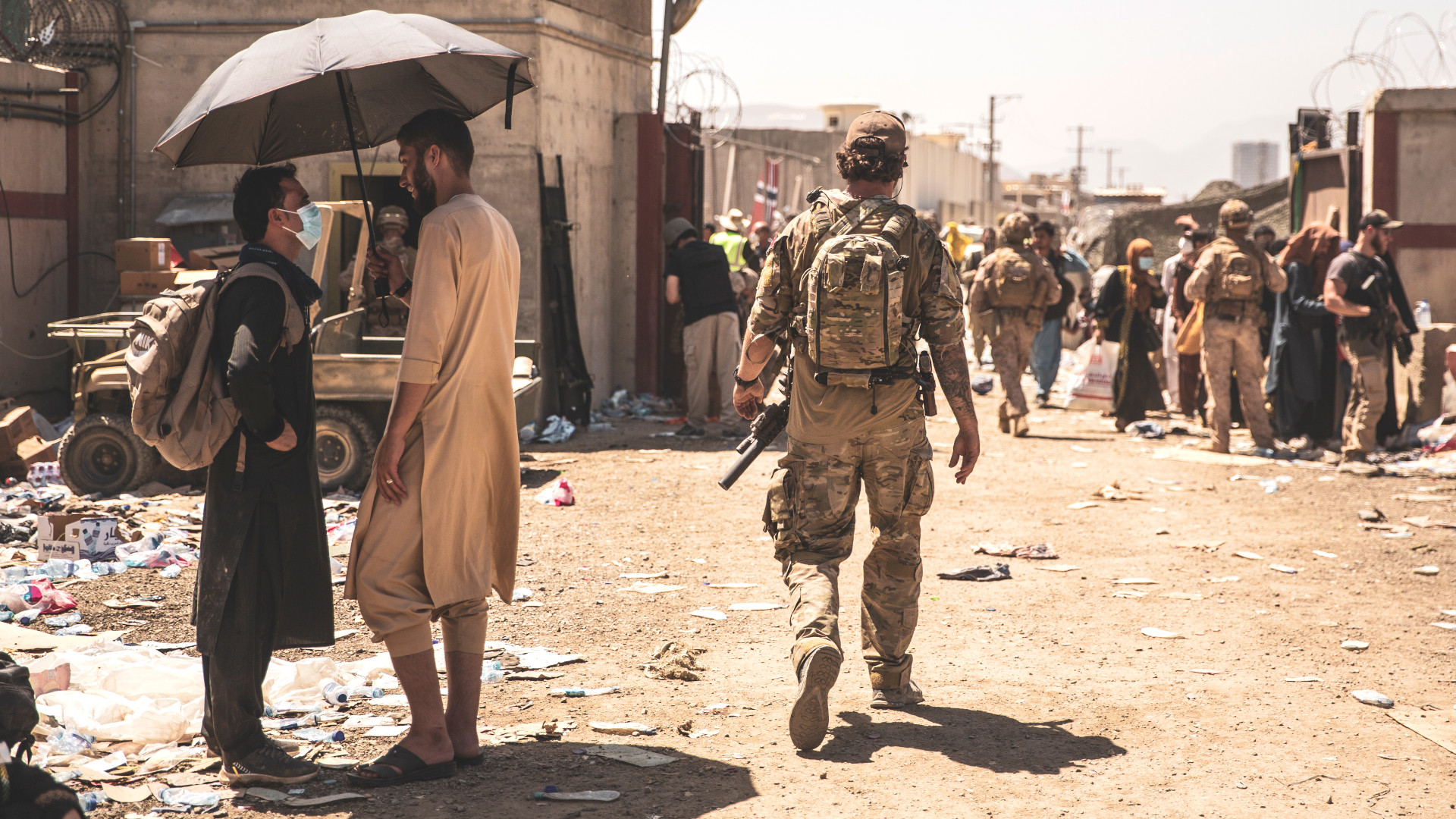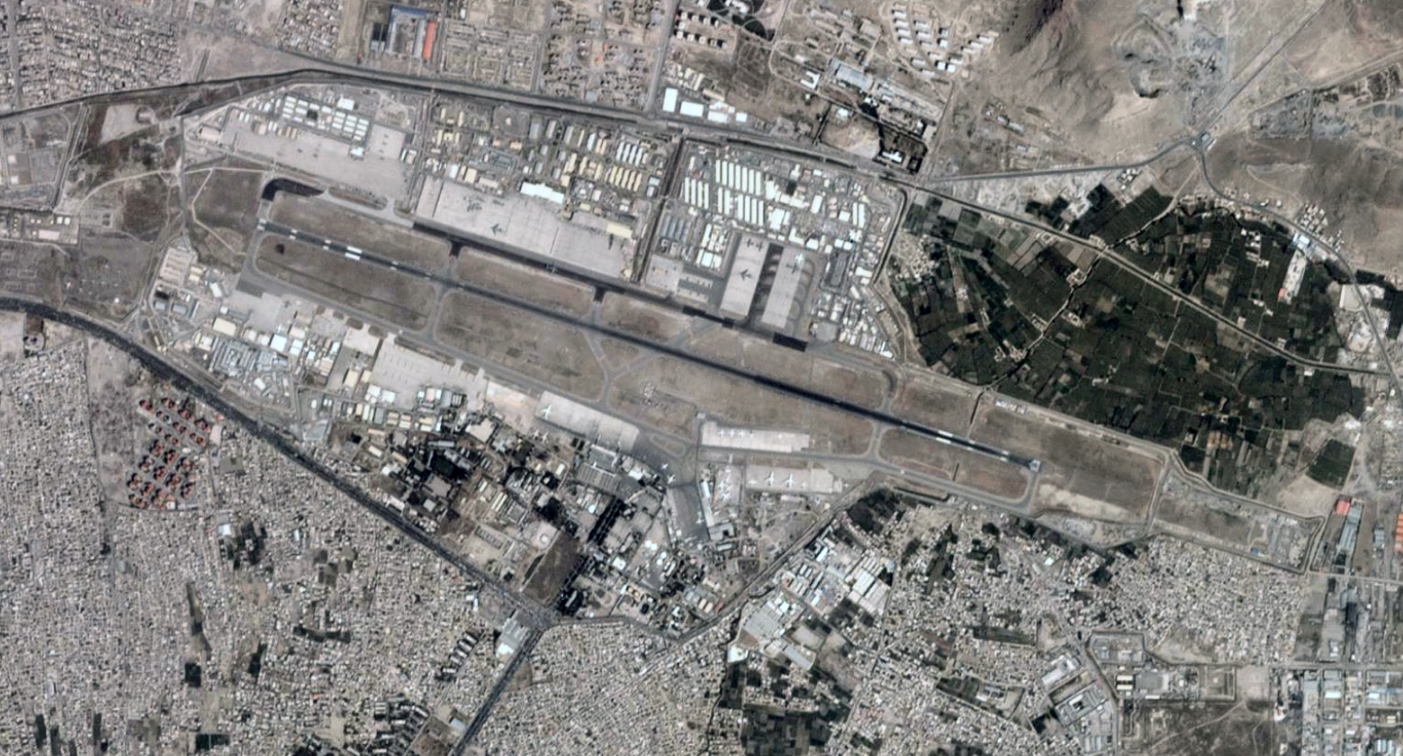The Pentagon has confirmed that U.S. forces at Hamid Karzai International Airport in Kabul could destroy any weapons and other equipment that they cannot take with them as they withdraw at the end of the ongoing evacuation operations. This comes as the planned deadline for the conclusion of this mission, Aug. 31, looms ever closer. To be completely gone by that date, American troops will have to begin packing up sooner than that, which only raises further questions about how many evacuees will actually be able to depart safely in the end, especially now that the Taliban says it has actively begun blocking Afghan citizens from leaving the country.
Pentagon Press Secretary John Kirby, together with U.S. Army Major General Hank Taylor, the Director of Current Operations within the Office of the Joint Staff, spoke the process of the final American withdrawal from Kabul, whenever that might occur, during his latest press briefing on the still highly fluid situation in Afghanistan today. Kirby made clear that, if nothing changes, the plan is to complete a total withdrawal of all U.S. military forces from Afghanistan by next Tuesday.

“The drawdown of both people and equipment will be done in the same manner that we would do it anywhere else,” he said. “Obviously, there’s a strong bias to be able to get our materiel out with our people. If there needs to be destruction or other disposition of equipment there at Hamid Karzai International Airport then do that and we’ll do that appropriately.”
Kirby did not elaborate on what American troops could be compelled to destroy, or how they might do it, as the withdrawal deadline approaches. The U.S. military did notably destroy an unknown quantity of ammunition at Bagram Airfield, which is situated north of Kabul, before it executed the extremely controversial pullout of the last of its personnel from that base in July.
Various kinds of large and otherwise costly items could well be among what has to be destroyed. As The War Zone
was first to report last week, the U.S. State Department has already confirmed that it has no intention of airlifting seven of its CH-46E Sea Knight helicopters out of the country and that it has deliberately disabled them in unspecified ways. The New York Times reported yesterday that an unspecified Counter-Rockets, Artillery, and Mortars (C-RAM) defense system, very possibly a Centurion C-RAM system, which you can read more about here, had been destroyed in place that the U.S. Embassy when it was shuttered last week. Light armored vehicles had also been abandoned after being rendered inoperable.
It also remains to be seen whether American troops might be ordered to destroy or otherwise disable any remaining aircraft, or other weapons and equipment, at Hamid Karzai International Airport that had belonged to the military of Afghanistan prior to the Taliban takeover last week. There have been reports of discussions, broadly, with the U.S. government about the potential use of airstrikes to destroy a wide variety of weapons and equipment that have fallen into the Taliban’s hands.

“Any retrograde out of, or drawdown, if you will, out of an environment that you can’t assume, is always going to be permissive is one that has to be done very carefully,” Kirby added, acknowledging that the potential threats to American and other foreign troops at the airport, as well as evacuees, are already significant. “It has to be sequenced in a very methodical way so that the safety and security of our people and the people we’re trying to protect is considered of paramount importance.”
He further explained that the Pentagon is not planning to provide any sort of regular updates about the withdrawal of troops or materiel, regardless of when that process starts or is expected to conclude. This is necessary to “limit vulnerabilities in the information space and in the actual physical space of the airport as we move out,” he said. Broadly speaking, any such withdrawal needs to be “done in a very careful, methodical way so that you can preserve as much capability to the very end as you need, as well as security… not just the security for our folks, but the security for the people we’re trying to safely evacuate.”
Questions about this final withdrawal process, and what it will mean for the ongoing evacuation operations, are growing as a consensus is emerging that it will be impossible, logistically, to evacuate all Americans, along with thousands of other foreign nationals and at-risk Afghans, by the end of the month. This is an increasingly inescapable reality despite the U.S. military significantly increasing the rate at which it has been able to get evacuees out of the country. At the press briefing today, General Taylor said that the U.S. government had been able to facilitate the departure of 1,000 people every hour in the past 24 hours, but acknowledged that there is still much work to be done.
Reports coming out now make clear there is a fierce debate happening, both within the U.S. government and among other nations, about the possibility of extending the evacuation mission in Kabul beyond the current Aug. 31 deadline. Various foreign officials have said in the past 24 hours that the final departure of American troops from Kabul would likely spell the end of their smaller evacuation missions. Today, representatives of the G7 group of industrialized nations, which includes the United States, issued a statement that included a call to “avoid arbitrary dates for ending military support to the evacuation.”
In addition, Adam Smith, the Chairman of the House Armed Services Committee, told reporters that there is a contingency plan for continuing to conducting operations at Hamid Karzai International Airport after leaving a classified briefing regarding the situation in Afghanistan today. At the same time, there are other reports that President Joe Biden is looking to hold firm on the Aug. 31 date. It is, of course, worth noting that having a contingency plan and actually implementing that plan are two completely different things.
A core issue in this discussion remains that the ability of any evacuation operations in Kabul, current or future, to proceed without interference, or worse, is entirely dependent on the Taliban. American officials continue to make no secret that troops on the ground and other personnel are engaging on a daily basis with Taliban members on various issues. The Washington Post was first to report earlier today that the Biden administration had dispatched Central Intelligence Agency (CIA) Director William Burns, who is also a career diplomat, to hold a secret face-to-face meeting with Taliban co-founder Mullah Abdul Ghani Baradar, which very likely touched on the deadline issue, among other things.
The Taliban, publicly, continued to make clear that they want all American and other foreign troops out of Kabul by Aug. 31, whatever the outcome of the reported Burns-Baradar meeting, or any other discussions between American and Taliban officials, might have been. Pentagon Press Secretary Kirby said it was his understanding that there was little “dissonance” between the Taliban’s public position on this matter and what its members had been telling their U.S. government counterparts behind closed doors.
Adding to the complexity of the situation, the Taliban further announced today that it was blocking Afghans from getting to Hamid Karzai International Airport. “The road that ends at the Kabul airport has been blocked. Foreigners can go through it, but Afghans are not allowed to take the road,” Zabihullah Mujahid, a spokesperson for the group, said at his own press briefing today. “This country needs our doctors, engineers, and those who are educated — we need these talents.”
Of course, this implicitly also means that Afghans who might be at risk of Taliban reprisals, such as those who worked with the U.S. government or other foreign organizations over the past two decades, will also be prevented from reaching the safety of the airport. There had already been reports that this was happening, but now it is a matter of official Taliban policy and it is unclear what options the U.S. government or other countries may have now to get Afghans out of the country.
All told, the future of the U.S. military’s evacuation mission in Kabul and, by extension, those of other countries, is highly uncertain at present. Unless an official decision is made to extend these operations soon, American troops will need to begin packing up well ahead of the Aug. 31 deadline. As those withdrawals progress it will only get harder to reverse course and the risk to forces still at the airport will dramatically increase.
If a decision is made to keep U.S. troops in Kabul after that date, they could find themselves trying to continue evacuation operations while in active conflict with the Taliban. If the overall security situation were to devolve rapidly at that point, American forces could find themselves in the even riskier position of having to execute a hasty withdrawal while under attack.
At that point, it’s not hard to see precious airlift capacity being devoted to moving people, rather than equipment. For example, a single helicopter could take up the entire cargo bay of a C-17A Globemaster III cargo plane that could be used to carry hundreds of passengers instead. With limited support available on the ground at the very end of the mission, fixed-wing aircraft and helicopters with aerial refueling capabilities, such as the elements of the U.S. Army’s elite 160th Special Operations Aviation Regiment (SOAR) now in Kabul, could easily be among the very last to leave, as The War Zone has previously explored in detail.
It is in those circumstances, especially, that they could find themselves most compelled to destroy various weapons or other equipment in place as they leave the country.
Update 3:20 PM EST:
The White House has issued a statement regarding President Joe Biden’s meeting other leaders from the G7 group of industrialized nations on the matter of Afghanistan. The statement confirms that the present plan remains for the U.S. military to have completely concluded evacuation operations in Afghanistan by Aug. 31, but also says that Biden has asked “for contingency plans to adjust the timeline should that become necessary.”
Update 7:15 PM EST:
Pentagon Press Secretary John Kirby has issued a statement saying that several hundred U.S. troops, described as “a mix of headquarters staff, maintenance and other enabling functions that were scheduled to leave and whose mission at the airport was complete,” have withdrawn from Afghanistan. He also said that this redeployment should not be taken as a sign that the total withdrawal of American forces supporting the ongoing evacuation operations at Hamid Karzai International Airport in Kabul had begun. More than 5,000 U.S. troops still remain at the airport.
Contact the author: joe@thedrive.com
